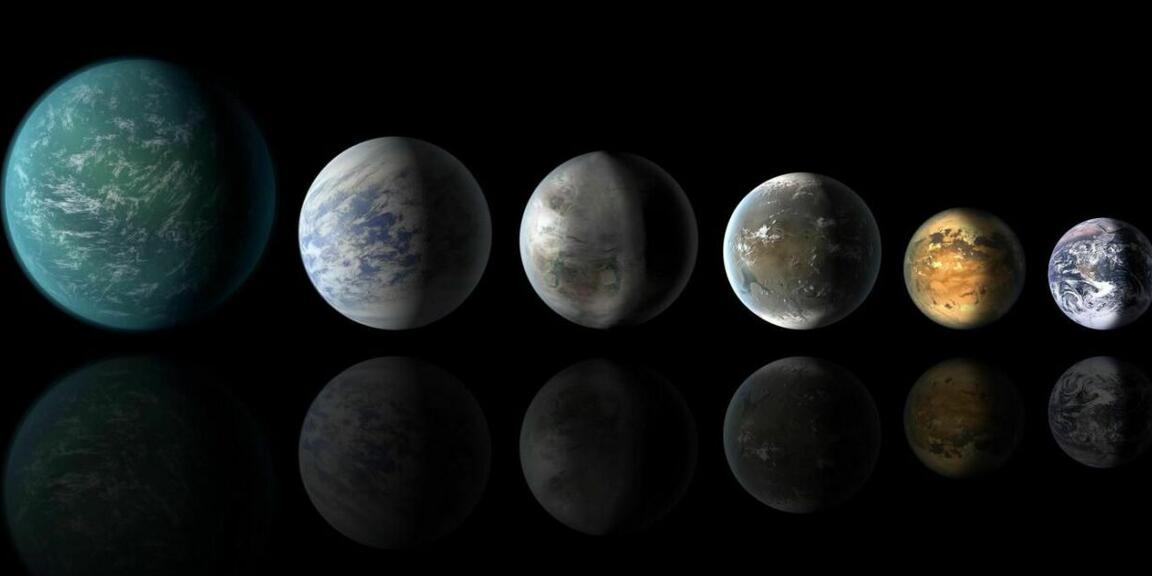
Exoplanets or the quest for life around another sun
Is there life elsewhere in the Universe? How do we detect exoplanets? How do we hope to find life on exoplanets light-years away? What is "TRAPPIST-1"? What do exoplanets tell us about the famous "Fermi's Paradox"?
The Copernican Revolution taught us that our Earth, far from being the center of the Universe, is only one among the many planets orbiting the Sun, which is itself similar in every respect to the stars lining the celestial vault. Later, astronomy revealed that there are hundreds of billions of stars in the Milky Way, our galaxy, and that there are hundreds of billions of galaxies in our expanding Universe. Faced with such immensity, it is very tempting to hypothesize the existence of other inhabited planets out there, and even of other advanced civilizations. Long confined to speculations, the existence of exoplanets, i.e. planets in orbit around other stars than the Sun, became a proven fact at the end of last century. Since then, more than 4000 exoplanets have been detected at an ever-accelerating pace. A few dozens of these are “potentially habitable”, i.e. they could be rocky worlds harboring oceans of water on their surface, like our Earth. Imagining complex forms of life on some of these planets is but a small step away, one that is happily crossed by science-fiction. But our imagination will eventually be replaced by real scientific measurements, as upcoming giant telescopes will soon be able to probe the atmospheric compositions of some of these extrasolar worlds, and, who knows, to reveal chemical traces of life out there. If so, our view of the Cosmos will change forever…
The Solvay Institutes and Science & Cocktails
MICHAËL GILLON
Michaël Gillon is a Senior Research Associate at the FNRS (Belgian national fund for scientific research) and works on the detection of exoplanets and their physicochemical characterization. He is the scientific leader of the exoplanets part of the TRAPPIST project, which has participated to the detection of more than one hundred transiting exoplanets, including the now famous exoplanetary system TRAPPIST-1, revealed to the public on 22 February 2017 during an international press conference at NASA headquarters and through a publication in the scientific journal Nature. In 2007, Michaël Gillon performed the first detection of the transit of an exoplanet similar to Neptune in terms of mass and radius. In 2010, he was the principal investigator of the project that made the first measurement of the thermal emission of a "super-Earth". Since 2012, he has been developing and leading the SPECULOOS project that targets nearby ultra-cold red dwarfs to detect potentially habitable planets well-suited for detailed atmospheric studies, including the search for chemical traces of life. He is also involved -as executive Board member- in the CHEOPS space mission, which consists in a small space telescope aiming to study in more detail already known transiting planets.
Music by BENJAMIN GLORIEUX ET AL, WITH VIDEO ARTIST KLAAS VERPOEST
Benjamin Glorieux will create a new piece with a string orchestra, with video artist Klaas Verpoest. Benjamin Glorieux is a cellist, conductor and composer. He studied in Brussels, Genève, Köln and the Chapelle Queen Elisabeth. The love for composers and compositions, the search for sounds and existing or unknown repertoire has been pivotal in his career, to a degree that has made old and contemporary classical music Benjamin's most inspiring incentive. For example, he plays Debussy on gut-strings, performs Brian Ferneyhough's Time and Motion Study with electronics of the 70's, gives regular concerts of the cycle of Bach cello Suites and is a musical partner of jazz-groups such as Rembrandt Frerichs Trio. As a pedagogue, he works regularly with MATRIX Leuven and was invited by Koninklijk Conservatorium Antwerpen as a cello-teacher for specialization in contemporary repertoire.
